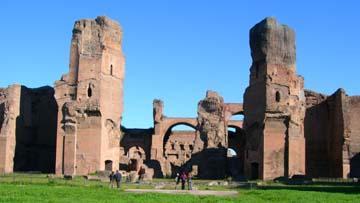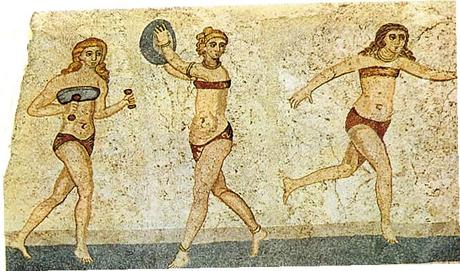 One time it
was told that all roads led to Rome: how to blame it?
Rome was the
centre of an empire and a civilization that marked an important stage in the
history of mankind.
This is one of the reasons why you
never finish to visit this city. Every tile, every place tells a story that is
interesting to listen to. Rome was
an important epicentre of the history for many centuries. Many artists have
left the testimonies which are now part of the cultural heritage of this
beautiful city where the sun often shines.
One time it
was told that all roads led to Rome: how to blame it?
Rome was the
centre of an empire and a civilization that marked an important stage in the
history of mankind.
This is one of the reasons why you
never finish to visit this city. Every tile, every place tells a story that is
interesting to listen to. Rome was
an important epicentre of the history for many centuries. Many artists have
left the testimonies which are now part of the cultural heritage of this
beautiful city where the sun often shines.
Have you ever been to the thermal baths or in the spa? If you have never been there you will have to try this experience: you can relax and pamper yourself. The ancient Romans loved a lot the thermal bath. A proof? The terme di Caracalla.
The Roman structure, however, was a bit different from the present spa: it also included the shops, the libraries, the gymnasium. So it was a place of the recreation for leisure.

an art rappresentation of the Romans at the baths
In fact, during the Roman empire there were the mimes, the dancers in the thermal bath already in the early afternoon. The customers played at the dice and there also were the fortune tellers. Fortunately, this architectonical complex is well preserved. It has come up to us and it is possible to recreate the original decorative structures.
The baths were built by the Emperor Caracalla from 212 to 217. The restorations- done by the the later rulers - were copious in order to well maintain this monument, which could accommodate up to 1600 persons. It was full of art works which are now preserved in some museums between Naples and Rome. The thermal bath are located a few meters from the beginning of the famous Appian Way, another place to visit in Rome.
The real heart of the thermal bath was a central building where you could choose whether to use hot, warm or cold water going in different setting: Calidaruim (hot), tepidariun (warm), frigidarium (cold).
How were used the thermal baths at the Roman age? The men and the women both could attend the thermal baths but at different times. These places became also an occasion -in a pleasant contest- where the Romans drove their bargains, as it happens during some golf match today.
Generally speaking the Romans loved a lot the thermal baths and the ticket was very cheap. During Agrippa government the admittance was free. There was an itinerary to follow: as first the physical activity in the gym, then one of the rooms with the various water temperatures and finally a pleasant break in Iaconicum which is the equivalent of our sauna. The frigidarium was left for last to tone the skin.
Think about it: these Romans already knew what was the dolce vita. So since we have to learn from the history, we can dedicate a while to our health and care about ourselves.. maybe with some cuddles at the spa!
more liks about Rome http://www.learnitalianow.net/2012/11/castel-santangelo-important-monument-in.html http://www.learnitalianow.net/2012/05/what-to-visit-phanteon-rome.html http://www.learnitalianow.net/2012/11/basilica-santa-maria-maggiore-important.html http://www.learnitalianow.net/2012/05/what-to-visit-foro-romano-rome.html http://www.learnitalianow.net/2011/10/what-to-visit.html http://www.learnitalianow.net/2012/03/what-to-visit-colosseo-rome.html http://www.learnitalianow.net/2012/09/trinita-dei-monti-and-staircase.html http://www.learnitalianow.net/2011/12/what-to-visit-piazza-navona-roma.html
Un tempo si affermava che tutte le strade portavano a Roma: come dargli torto? Roma era il centro di un impero e di una civiltà che segnò una fase importante nella storia dell’umanità. Questo è uno dei motivi per cui non si finisce mai di visitare questa città. Ogni mattonella, ogni luogo, racconta una storia che è interessante ascoltare. Roma ha vissuto varie epoche e gli artisti di ogni tempo hanno lasciato delle testimonianze che fanno parte del bagaglio culturale di questa splendida città, dove splende spessissimo il sole.
Avete mai provato a frequentare le terme? Chi non le avesse mai provate ,deve sperimentarle per rilassarsi completamente e coccolarsi un p’. Piacevano ovviamente anche agli antichi romani: una dimostrazione? Le terme di Caracalla. La struttura era però un po’ differente da quella che potrebbe essere quella delle attuali terme: queste comprendevano anche botteghe, biblioteche, palestre. Era dunque un luogo di svago per il tempo libero. Infatti già dal primo pomeriggio nelle terme, ai tempi dei romani, si trovavano mimi, danzatori, si giocava ai dadi, ci si poteva far leggere anche il futuro da indovini. Fortunatamente questo complesso architettonico è arrivato fino a noi conservato bene e si possono praticamente ricostruire le strutture decorative originarie. Le terme furono volute dall’imperatore Caracalla e costruite dal 212 al 217.I restauri, fatti anche dai successivi governati, furono molteplici per poter mantenere in buono stato questo monumento che poteva ospitare fino a 1600 persone. Era ricco di opere d’arte che oggi sono conservate in musei fra Napoli e Roma. Le terme sono situate a pochi metri dall’inizio della famosa via Appia, altro luogo da visitare a Roma. Il vero cuore delle terme era composto da un edificio centrale in cui si poteva scegliere se usufruire di acque calde , tiepide o fredde nei rispettivi ambienti che erano : il Calidaruim ( calde), tepidariun (tiepide), frigidarium ( fredde).
Vi siete mai domandati cosa succedesse nelle terme al tempo dei romani? Uomini e donne potevano entrambe frequentare le terme, ma in orari differenti. Questi luoghi divennero posti dove, in ambiti piacevoli, si concludevano dei veri e propri affari … un po’ come i campi da golf oggi. In generale le terme piacevano un sacco ai romani e l’ingresso era veramente basso fino ad Agrippa che le rese gratuite. Vi era tutto un percorso da seguire: dell’attività fisica in palestra, alla scelta di una delle stanze con le varie temperature dell’acqua ed infine una piacevole sosta nell’ Iaconicum che è l’equivalente della nostra sauna. Il frigidarium era lasciato per ultimo per tonificare la pelle.
Pensateci bene: sapevano già cosa fosse la dolce vita allora questi Romani. Quindi siccome dalla storia bisogna imparare, sarebbe bello che prendessimo spunto per dedicarci del sano tempo e volerci bene con qualche coccola…magari alle terme di oggi!

